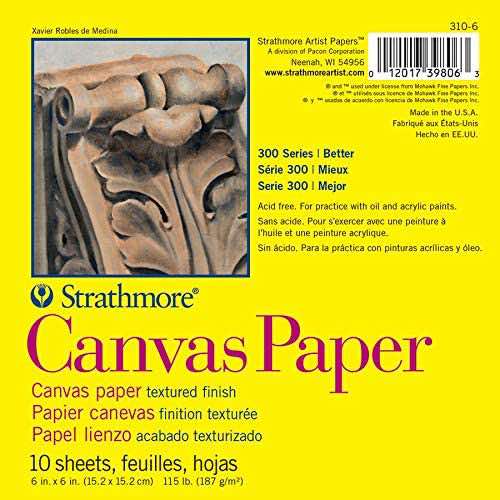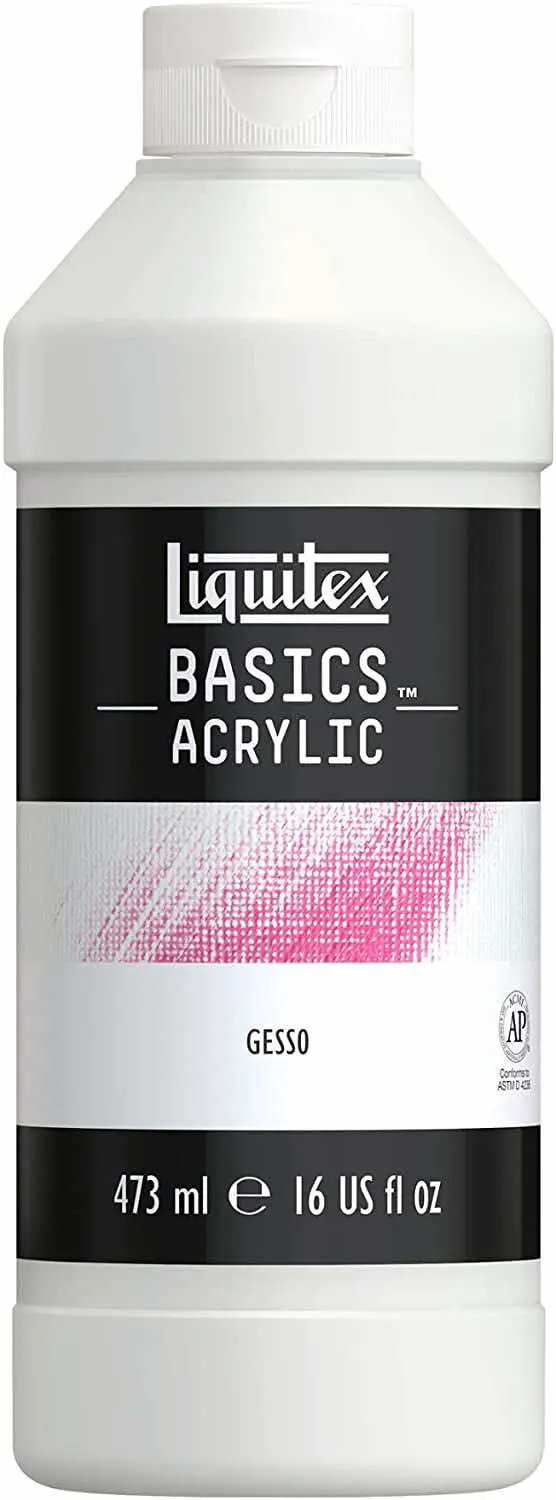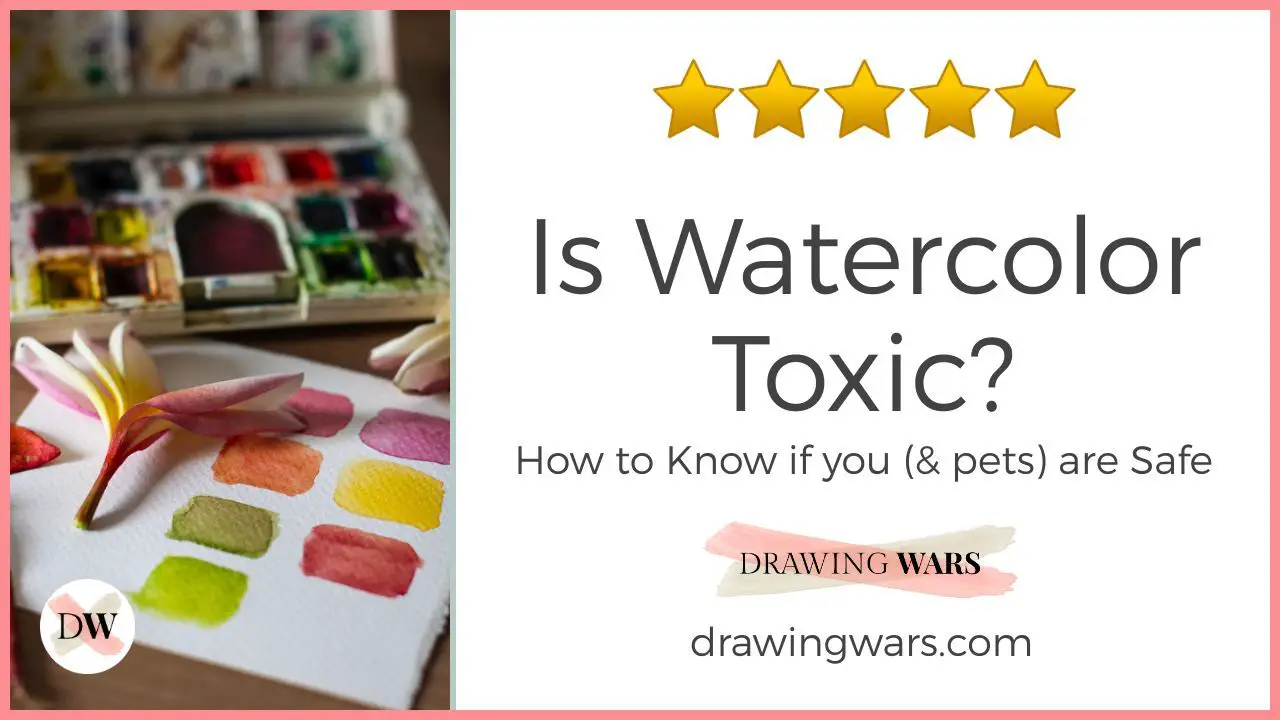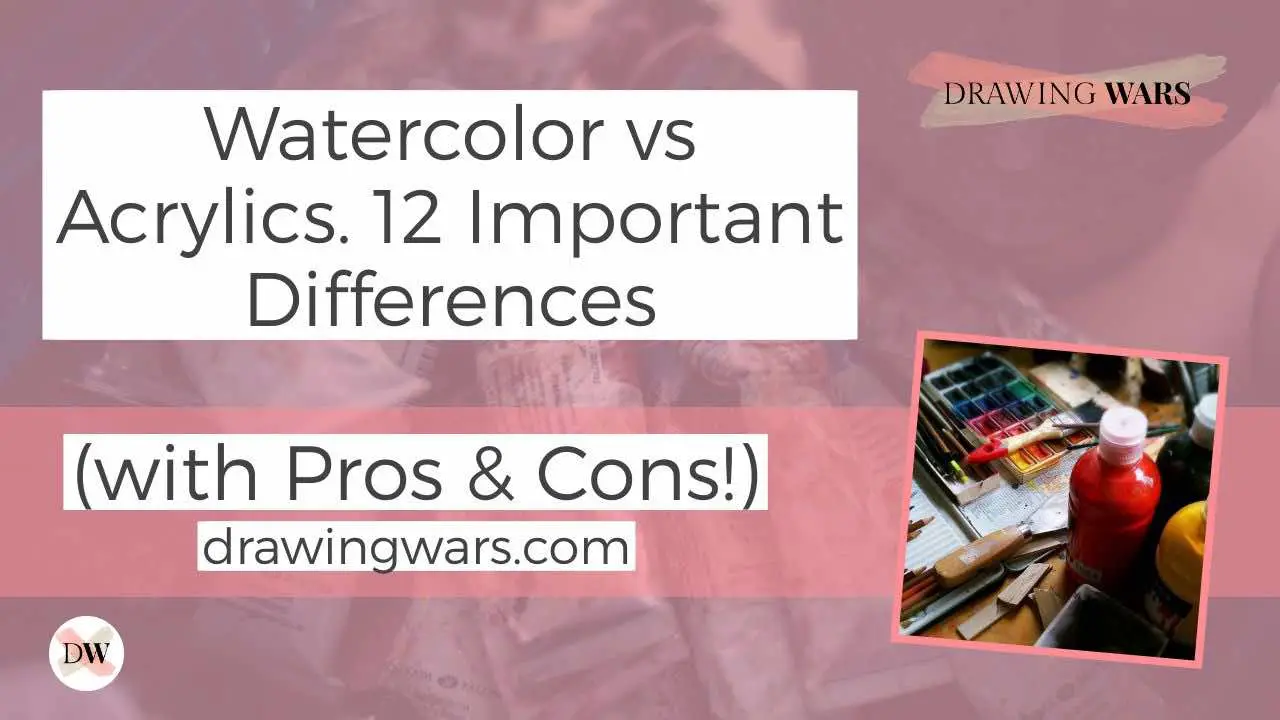
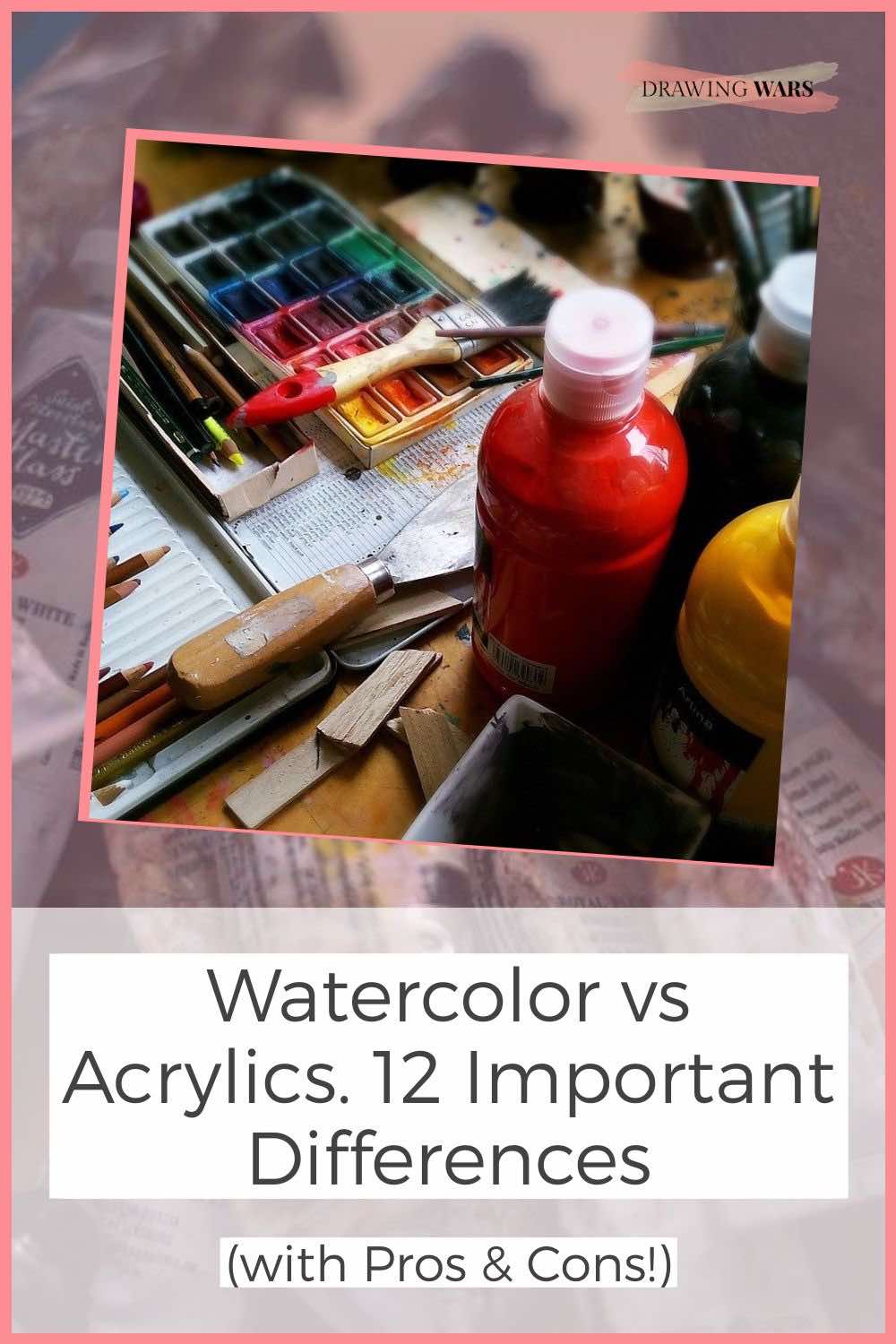
Introduction
Are you a beginner at painting? With so many art materials out there, it could become tricky to go with one for the very first time. And perhaps you’re stuck with two of the most common painting mediums out there - watercolors and acrylics. There’s no right or wrong material, as it all comes down to what you prefer and enjoy as an artist. We can relate to your confusion and we’ll help you pick between these two mediums by going through their basic differences, pros, and cons!
Watercolors and acrylics are both water-based art mediums. They require water to trigger the pigment, however both the painting support for both mediums is different. Watercolor is used for paper, whereas acrylic can be used on wood, paper and canvas. The two materials also have different binders, varnishes, painting mediums and framing requirements.
1. The Binder
What binds together the beautiful pigment particles in watercolor and acrylics?
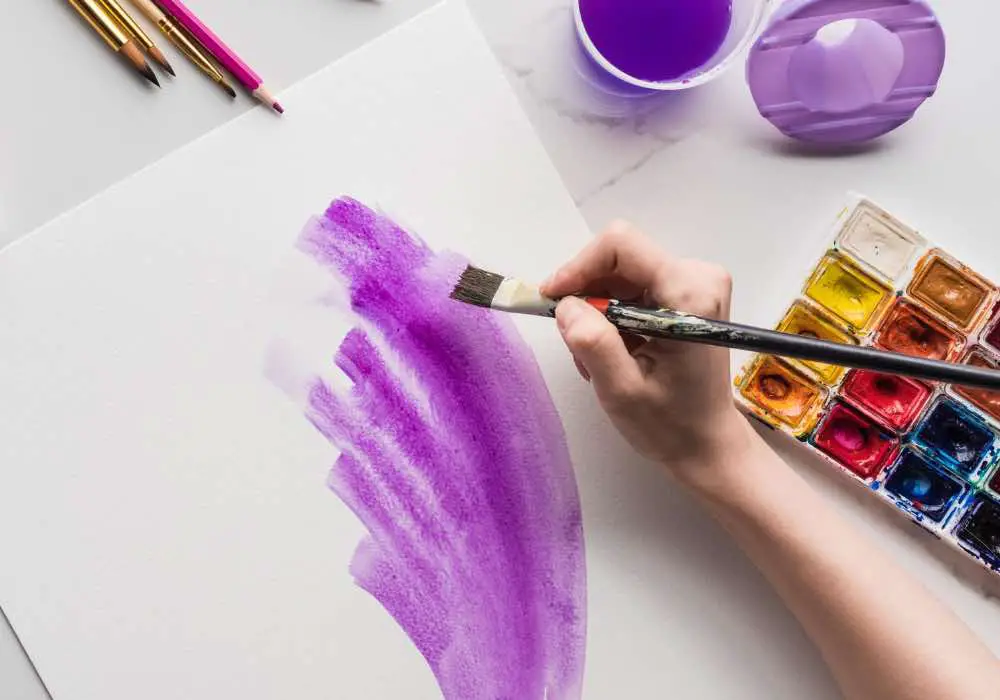
The binder is a substance used in painting or drawing material to keep or ‘bind’ the pigment together. For watercolors, the binder is gum arabic, whereas, for acrylic paints, it is a polymer emulsion. This is the reason why acrylic paints often give the ‘plastic effect’ and make an excellent choice for textural paintings.
Hence, acrylics are a better choice for artists who love 3D textural painting, as 3D textures are near to impossible to achieve with watercolor.
PRO-TIP
CREATE A MIXED MEDIA PAINTING
Since watercolor and acrylic are both water-based paints, they can be used together. Using a mixed media sheet is the best way to create a painting fused with both watercolor and acrylic. Always use watercolor first though!
2. The Support and Applications
Not every surface is suitable for watercolor!

Watercolors cannot be applied on canvases or other materials. It is hard for watercolor flow to maintain on any support other than paper. Due to this reason, watercolor paint is not as versatile as acrylics.
That being said, paper is the most used and appropriate support for watercolor paints. But not just any ordinary paper - there are many color and texture varieties to choose from. Here are a few common watercolor paper types you should know:
- Hot pressed watercolor paper- Cold watercolor paper- Rough watercolor paper
And not just that, but each watercolor paper type is available in different weights too. The fun part is you could use both acrylic paints and watercolor on these papers, as acrylics are a very versatile medium and watercolor paper handles almost every medium very well.
PRO-TIP
CHOOSE WATERCOLOR PAPER WEIGHT WISELY
If you love using a lot of water while painting, pick a watercolor paper with the heaviest weight. The greater the weight, the lesser the chances of the paper buckling while painting.
3. Drying Time
You need to be really fast with both watercolor and acrylics, especially watercolor!

Although the drying time of watercolors and acrylics are similar, there is one big difference.
With watercolor, you’ll have to be faster. Once the paint is on paper, there is no going back. If you’re using techniques that have a lot of water involved, the drying time may be slower but the manipulation and control will get harder. You’ll need to know how to handle the water flow and also protect your paper from buckling!
However, with acrylics, you could choose a retarding medium which slows down the drying time. So if you choose to use a retarder, you can have a maximum of 5 to 10 minutes of extra drying time.
WARNING!
DO NOT APPLY TOO MUCH WATER
Using too much water in your watercolor painting may alter the drying time but it would make the paint very difficult to control.
4. Painting Mediums
Painting mediums help you manipulate the effects!
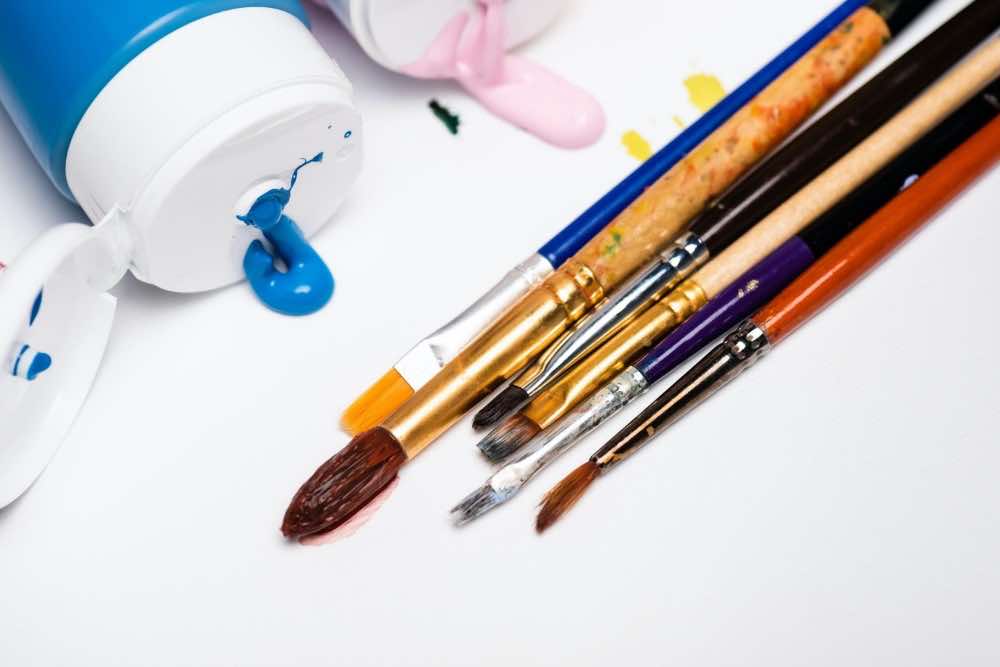
Painting mediums are usually fluids that help you manipulate the binder of paints. There are respective mediums for both watercolors and acrylics.
The most used watercolor mediums are:
-
Gum Arabic: Although gum arabic already exists as a binder in
-
Masking Fluid: This medium helps create white highlights in watercolor paintings. Use it with a brush to block the areas where you want the paper to look through.
With acrylics, you have a variety of mediums to choose from! And with every medium, you can achieve an entirely different effect. Here is a list of few acrylic mediums:
-
Matt gel: Tones down the inherent glossy effect of acrylic paints.
-
Gloss gel: Adds a glossy effect into the paints while painting.
-
Retarder: Slows down the drying time of acrylic paints. This would be really helpful if you’re a slow painter!
Each varnish adds a certain level of gloss or matt to your acrylic painting.
PRO-TIP
USE A SEPARATE BRUSH
Do not use your painting brushes for applying mediums. Painting mediums can be sticky and it's often hard to remove them. You could end up ruining your entire brush collection!
5. Framing
Framing every painting is not a cost-effective idea!

With time, the colors of a watercolor painting are more likely to fade away. Watercolors do not shield against light well, making overexposure the most likely reason for the painting to lose its brilliance. For protection, most watercolor paintings are framed and while there are watercolor varnishes as well, they are the less popular option.
That being said, acrylic paintings are completely the opposite! You do not need to frame acrylic paint because the paint particles are very sturdy.
PRO-TIP
USE unstretched canvas cloth
Canvases are available in both stretched and unstretched forms. To save up space and money, use cloth canvas instead of buying canvas frames. It's not necessary but if you're low on space, then it may be necessary.
However, for beginners, we would suggest you get canvas paper , as it could make practice and acrylic painting practice easier!
Strathmore 300 Series Canvas Pad
This canvas pad is available in multiple sizes, so pick the one that suits you best!
6. Varnishing
So what exactly do you need to protect your precious watercolor or acrylic painting?
No artist would want their work getting destroyed. And if you paint a lot, framing every single watercolor painting would certainly cost you a fortune! So many artists use varnishes or fixatives to protect their work instead. Hence for watercolors, you could either use a watercolor spray or a coating varnish. A spray is better though as you can be more careful with it.
On the other hand, there are many varnishing options for an acrylic painting! And although it isn’t necessary to use it, you could use these different varnishes to give an appropriate effect. For instance, you could use a matt varnish to tone down the inherent glossy effect of acrylic paints.
WARNING!
Each medium has its own varnish
Never substitute a watercolor varnish for an acrylic one. Remember that each medium has its own binder, and likewise, varnishes are different for every type of art material.
7. The Purpose of Painting
To each artist, their own!
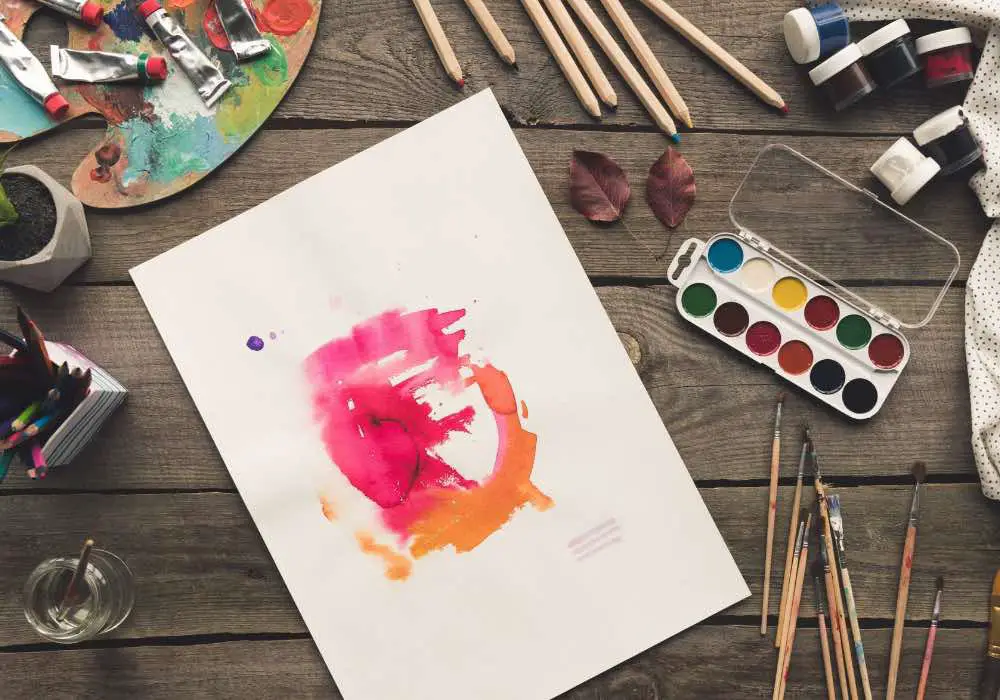
Although the purpose of a painting depends on the artist, watercolor and acrylics target different artist groups. Watercolor paints are mostly used by illustrators, whereas acrylics are preferred by canvas painters. Beginners are also more likely to use watercolor because it only requires decent paper and brushes.
For canvas artists who want to get the job done quickly, there’s nothing better than acrylic paints. But acrylic painting can be more demanding for art enthusiasts or beginners who have no experience with painting on canvas.
if you’re using acrylic paints for the first time, we suggest you get your hands on this awesome acrylic painting set.
PRO-TIP
WATERCOLOR IS GOOD FOR PRACTICE
Watercolor is a more cost-effective solution if you're just getting started. You can experiment with different genres, from landscapes to portraits, without having to invest too much.
8. Order of Working
What's the general method of painting for both acrylic and watercolor?
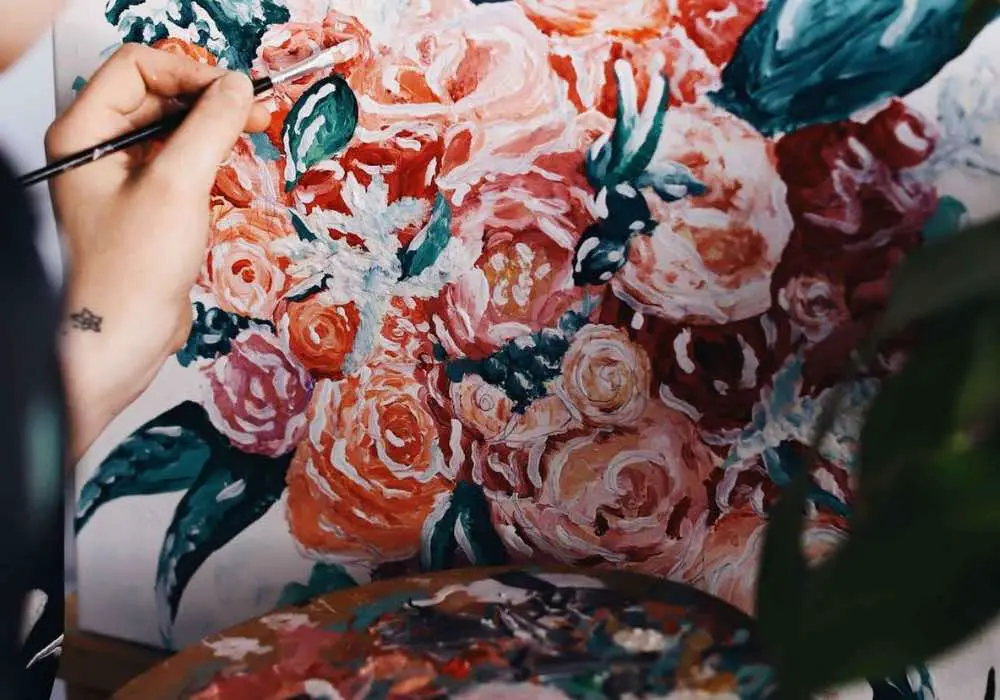
For watercolor paintings, you need to work from the lightest to the darkest. Building up layers is the only way to work with watercolor, as it is naturally thin. Going dark to light with watercolor will end up in a completely dark painting, so never try doing that!
However, with watercolor you can choose to amend the technique by painting dry over wet, wet over dry or wet into wet.
On the other hand, there are two ways to work with acrylic paints. The most common method is to work from dark to light. This is because using white color is essential in acrylic painting. So adding highlights over the top makes it easier for the artist to differentiate between lighter and darker tones.
PRO-TIP
PREPARE AN ACRYLIC PAINTING BASE
Create a monochromatic base before beginning your actual painting. This will help you decide between the dark and light areas. It will save time before you start adding the actual tones and shades of color on top of the underpainting.
9. Painting Techniques
Both watercolor and acrylics need to be handled differently!

Painting techniques for acrylics are vast. With acrylics, you can achieve textural paintings easily. There’s also more room for experimenting as it’s easy to switch between thin and thick layers, depending on the quantity of water you’re using.
However, with watercolor, it would take you thrice the time if you want to build opaque layers or textures. Watercolor isn’t ideal for 3D textural painting works.
10. Flexibility in products
Watercolor and acrylics exist in multiple forms - which one would you choose?
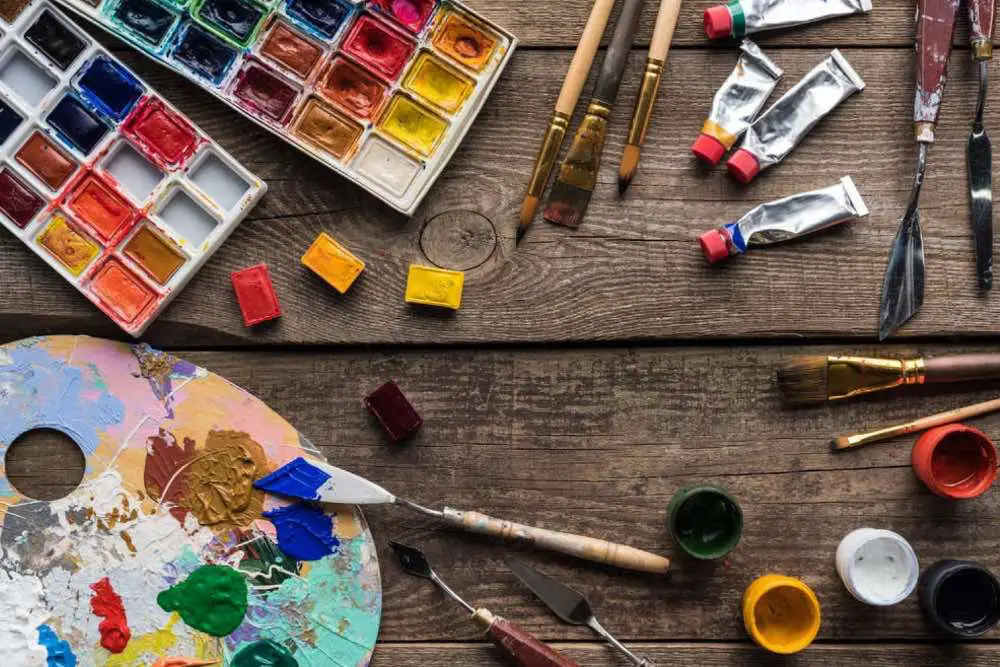
Acrylics are mostly available in tubes. However, with watercolor, you have a lot of common options. Apart from tubes, you can even get them in the form of cakes and pencils. Hence, achieving detailed lines and works with watercolor is easier than acrylic paints.
However, acrylic paints are also available in a variety of forms, which are classified according to the sheen they give after the painting is done. You could also get acrylic paints in jars, this is best for larger areas of work.
11. Using White Color
Is it necessary to use white in both watercolor and acrylics?
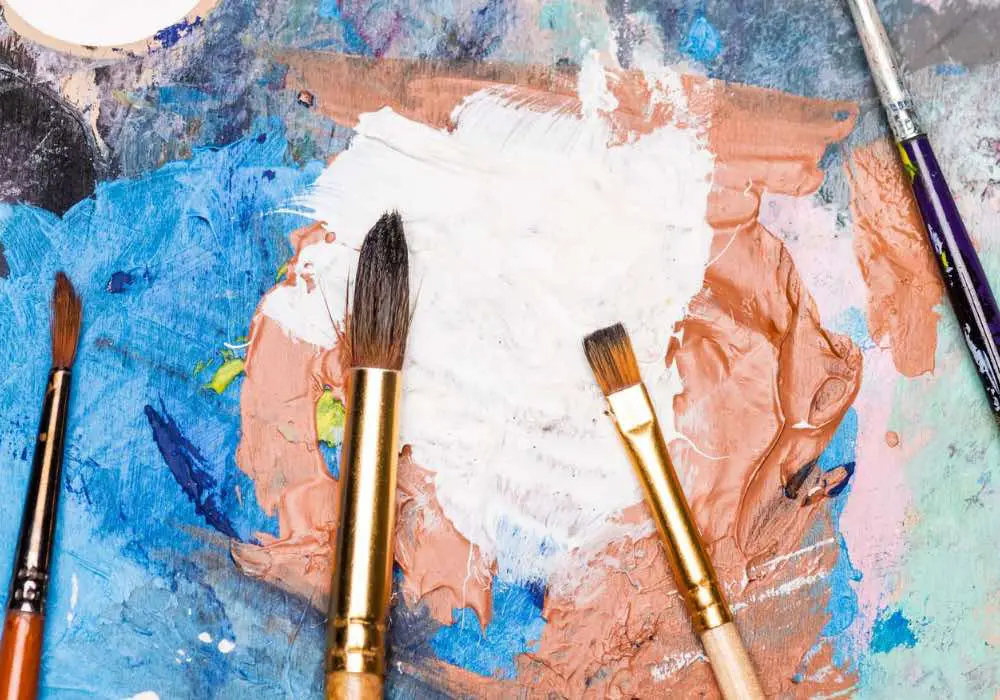
Since the working process is in transparent layers, using white color is not necessary for watercolor painting. You can achieve lighter values by adding more water.
However for acrylic painting, white is necessary especially if you’re not applying too much water. White is needed to create lighter tones. If you’re using the thin wash technique in acrylic, then white may not be required. However, using acrylic paints in thin gradients is very difficult and mostly, they are used thick.
PRO-TIP
USING WHITE IN WATERCOLOR
Use white watercolor paint only if you want to keep the opacity of the particular shade consistent.
12. Removing Mistakes
Can you remove watercolor mistakes?

Once the paint is on paper, it is near to impossible to get it out without damaging the paper. Even if you’re using a heavy sheet and choose to sand it, the paper will get distorted and scraped.
Things are much easier for an acrylic painting. If you make mistakes, all you need to do is put some gesso over it. Gesso is a white substance (often available in other colors too) that is used as a primer for mostly canvas, and sometimes for paper. If you ever do something wrong, you can put gesso over the painting and start it over again.
Here’s a gesso primer we would highly recommend if you ever want to paint over an acrylic painting that doesn’t make you proud!
Liquitex Gesso Surface Preparation Medium
This 16 oz gesso is all you need to make fixes to your acrylic painting.
Watercolors vs Acrylics: At a Glance
The differences are subtle, but here's all you need to know!
| Watercolor | Acrylics | |
|---|---|---|
| Binder | Gum arabic | Polymer/Plastic |
| Painting Support/Surface | Paper | Canvas, mixed media sheets, wood |
| Drying time | Very fast | Super fast |
| Painting mediums (for manipulating effects) | Masking fluid (used for creating highlights) | Retarder, gloss gel, matt gel |
| Framing | Ideal, to protect colors from fading | Optional, glass unnecessary |
| Varnishing | Optional but recommended | Optional |
Watercolor vs Acrylics: The Pros & Cons
So which one is a better choice: Watercolor or acrylics?
Watercolor and acrylics both have their pros and cons. No medium is better than the other, it all depends on how you want to use it and what you want to get from it.
Watercolor
The Pros
-
It’s easy maintenance and requires minimal extra accessories. You just need to know how to control water well.
- It is available in many formats, providing the artist with endless choices. You can get watercolor in the form of pencils, cakes, tubes, and even inks.
- Watercolor is very easy to clean up.
The Cons
-
Watercolor is more difficult to handle because once the paint is on paper, it’s hard to go back! So for a watercolor painting, you would need to plan in advance. You need to know the light and dark areas.
-
While creating extremely large-scale works with watercolor is possible, it is very difficult. Only a few can master the art of going large scale with watercolor.
Acrylics
The Pros
-
Acrylic paints are more versatile as you can apply them to a variety of painting supports. Wood, fabric, glass, canvas, paper - they pretty much provide excellent coverage on any surface!
-
Acrylic painting can be used to create many textures, including 3D.
-
You can combine different techniques of acrylics together.
-
You can achieve different types of finishing by choosing varnishes or gels ranging from matte to gloss.
-
They are very good for covering large areas and cost-effective for painting large scale. This is a huge advantage over both watercolor and oil paints.
The Cons
- They dry extremely fast. You would either have to make your painting speed faster or use a retarder to slow down its drying speed.
- Acrylics are extremely messy to clean up. You will have to rinse the brushes and palettes as quickly as possible to avoid the paint from sticking for a long period.
Conclusion
And so, watercolors and acrylics are both water-based painting mediums. At the basic level, all you need is water to get started with your painting. Watercolor is better for creating illustrations and quick studies on the go, whereas acrylic is more suitable for canvas artists but it can be used on both paper and canvas since it has a plastic binder, which is versatile and sticks to almost every support.
If you’re interested to learn more about painting media, especially watercolor, please read this post on the toxicity of watercolor paints .
Is Watercolor Toxic? How to Know if you (& pets) are Safe
Are you a huge fan of watercolor paints? They are the low-maintenance, give amazing effects but are they toxic? It's easy to find out!

By Jimena & Iñigo
The Navarro-Rubios
My husband and I are learning how to draw and paint. We wanted to share this learning process with the world and have fun! That's why we created this blog. We'll have drawing contests every week and you'll decide who won that week! Follow along and learn with us!

Jimena & Iñigo
The Navarro-Rubios
My husband and I are learning how to draw and paint. We wanted to share this learning process with the world and have fun! That's why we created this blog. We'll have drawing contests every week and you'll decide who won that week! Follow along and learn with us!
